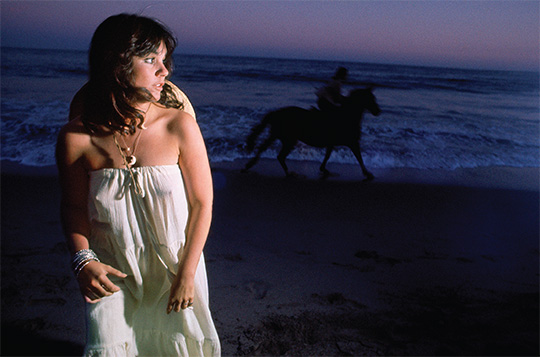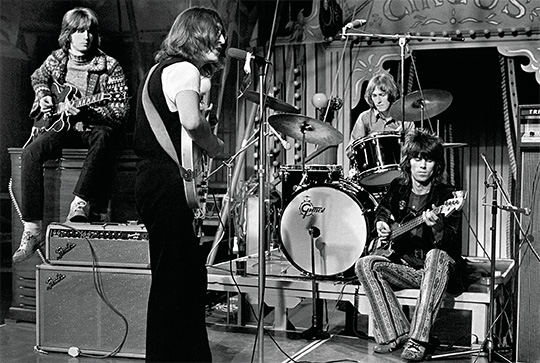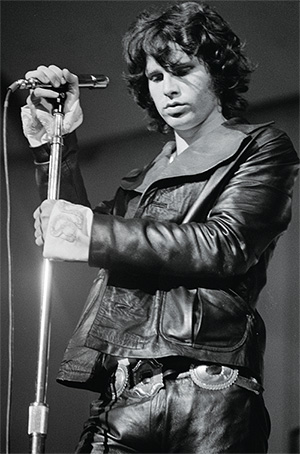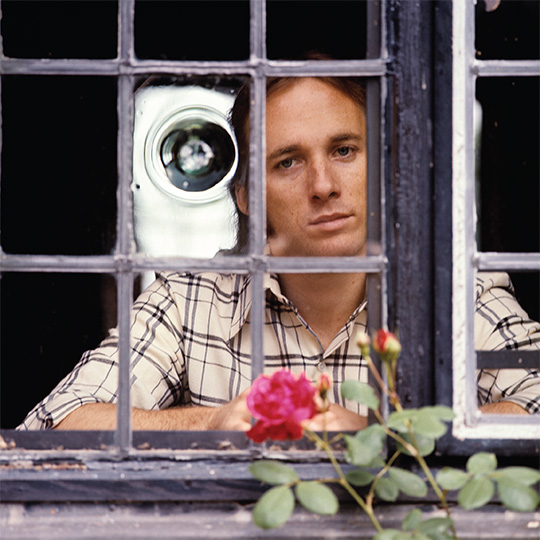I never really wanted to be a photographer. I’m kind of a serious guy.” That’s an ironic statement coming from Ethan Russell, the guy who captured some of the most instantly recognized rock-and-roll images of all time. Russell shot the album covers of The Who’s “Who’s Next,” “Hasten Down the Wind” by Linda Ronstadt and The Rolling Stones “Get Yer Ya Yas Out!”
Plus he captured the album image of the Holy Grail of rock bands, The Beatles’ “Let it Be.” As Melissa Leon put it in The Daily Beast, “To tell the story of the now famed rock photographer…Ethan Russell is to strain the amount of luck you imagine any one human is allowed.”
Born in New York, Russell grew up in San Francisco and Carmel Valley. While in his early 20s, with no particular career path in mind, he decamped for London and was serendipitously invited to photograph Mick Jagger for a Rolling Stone magazine interview. Events snowballed from there.
Coupled with that luck, Russell was gifted with an extraordinary natural talent: an eye for composition, and an ability to put his subjects so at ease that the photographs he produced define the humans behind the rock stars. He credits his childhood experiences in Carmel Valley as the source of this skill.
“My folks had a big ranch in the Valley,” he says. “I’d go hunting there. When hunting, you’re very quiet, don’t attract attention…you move quickly and decisively and then back out of the way. That’s how I approached photography.”
In addition to album covers, Russell and his camera documented a startling number of images while hanging out with some of the most famous musicians of the golden age of British rock. Many of them will soon be on exhibition at Carmel’s Winfield Gallery.
“These images aren’t just photojournalism,” says gallery owner Chris Winfield. “At the beginning, these were just documents of rock and roll. Now they’re an art form.”
The exhibition runs December 1 through 31 at the Winfield Gallery on Dolores btwn. Ocean and 7th in downtown Carmel. During the opening night celebration, 20 percent of sales will benefit the Youth Arts Collective, a Peninsula nonprofit that teaches and mentors high school and college artists.
Russell will also present a multi-media lecture at Sunset Center on San Carlos and 9th in Carmel on February 8, 2014. For more information, visit www.winfieldgallery.com and www.sunsetcenter.org.

LINDA RONSTADT, “HASTEN DOWN THE WIND,” MALIBU, 1975.
“I love Linda. She is a fabulous person,” Russell says. “So low key. We were shooting on the beach outside some music producer’s house in Malibu Colony. Shooting away and nothing was happening. The light was fading and the horse just appeared. I shot two frames: in the first one she is saying, ‘Don’t shoot! You’ll scare the horse,’ and looked like you couldn’t sell her to a circus…but in this one she’s a goddess.”

“WHO’S NEXT” ALBUM COVER, 1971.
“The Who had already rejected several covers for this album,” Russell says. “To get ideas, I accompanied them to a gig in Central England. [Who guitarist] Pete Townshend’s driving scared me so much I laid down in the back seat. I was freaked out…On the way home, Pete was driving fast again…I saw those concrete things and didn’t know what they were. He slowed down at a roundabout and asked if I had any ideas; I told him about those shapes.
Pete turned around and we stepped out into this moonscape. I was taking test Polaroids and looked up…Pete had peed on it…I thought “OK!” Took about eight shots. Except for Pete’s, the “urine” was water we poured on the concrete. They couldn’t perform! Totally spontaneous. We tried, but you can’t brainstorm that kind of thing.”

THE DIRTY MAC IN REHEARSAL, 1968.
FROM LEFT: ERIC CLAPTON, JOHN LENNON, MITCH MITCHELL, KEITH RICHARDS.
“This ‘supergroup’ performed just once, for the ‘Rolling Stones’ Rock and Roll Circus,’ a TV program they filmed but never aired,” Russell explains. “This was just after Cream broke up…They played ‘Yer Blues.’ Lennon knocked it out of the park; the music was perfect.”
 JIM MORRISON AT LONDON’S ROUNDHOUSE, 1968.
JIM MORRISON AT LONDON’S ROUNDHOUSE, 1968.
“I never said one word to Jim Morrison: as far as I know he didn’t say a word to anybody,” Russell recalls. “He was so anti-1960s in a funny way. He was dark and sultry. At this show, he got in a big fight with the producer of a film that was being shot, demanding that the lights be turned off—and he was being paid to be filmed. I’d seen Mick Jagger perform many times by this point; he was a dynamic entertainer. Morrison was different, this guy in leather, just standing there. The Doors’ music was much different than anything else going on at the time as well. Very dark.”
 STEPHEN STILLS, LONDON, 1960s.
STEPHEN STILLS, LONDON, 1960s.
“We had stayed up all night playing cards and partying and I shot this at dawn. It’s sort of a sweet picture,” Russell says. “I didn’t know what to expect but he wasn’t too friendly…I could’ve copped an attitude, though…who knows?”

JERRY LEE LEWIS, “SPOTLIGHT,” 1970s.
“I loved that suit so much,” Russell says. “It couldn’t have been less appropriate for the 1970s. He was so anti-hip. This was shot in a Los Angeles recording studio on one of those hot, smoggy, why-does-anyone-livehere kind of LA days. A group of session musicians were waiting for him to record an album. In he walks, all blustery: ‘The Killer is here! The Killer is here!’ The curtain, piano and ashtray were there in the recording studio. I brought the spotlight. Jerry Lee brought the suit. The funny thing is that this photo wasn’t published for many years. No magazine would touch it because they thought it was tacky. I love it.”